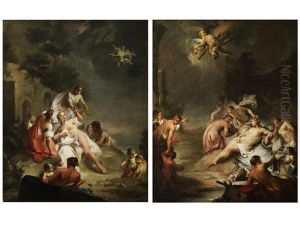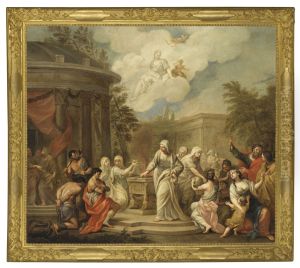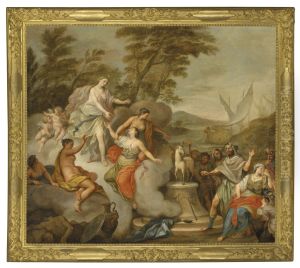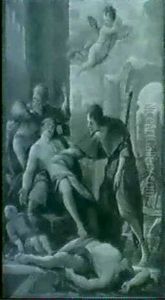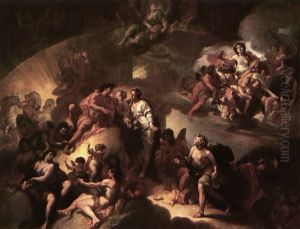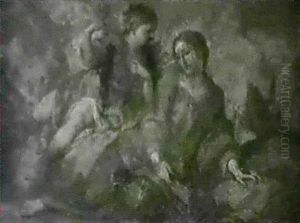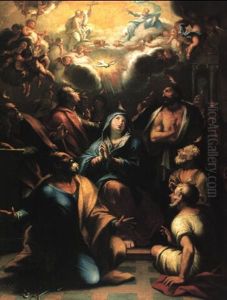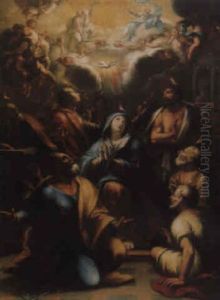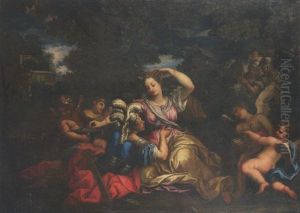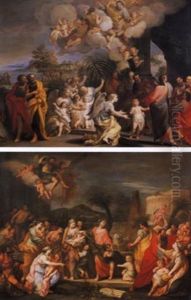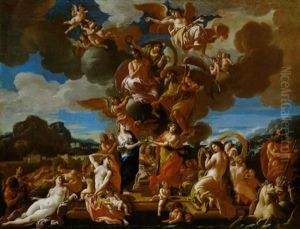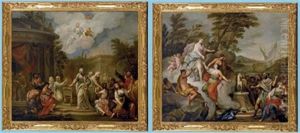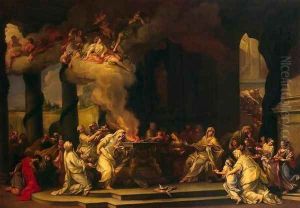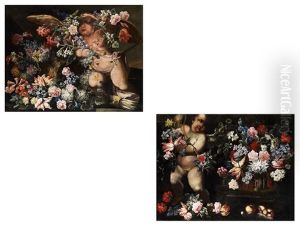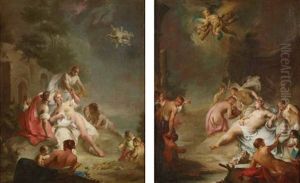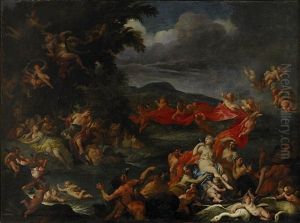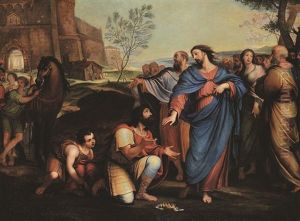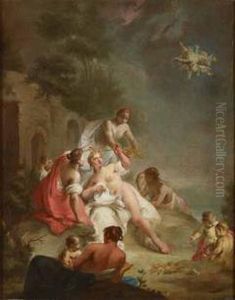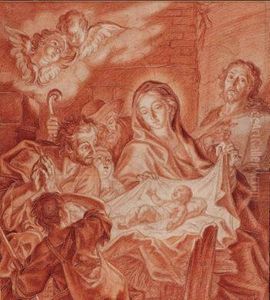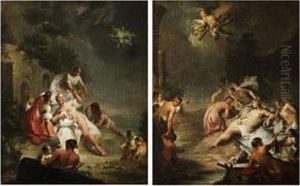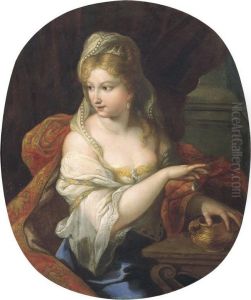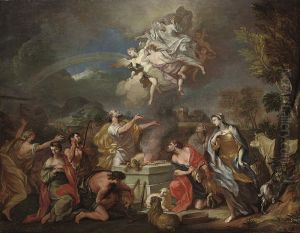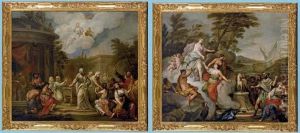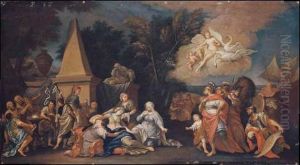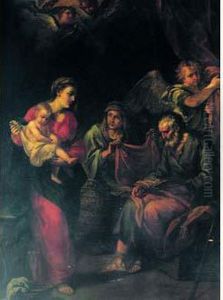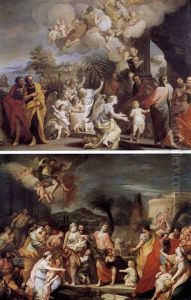Alessandro Marchesini Paintings
Alessandro Marchesini, also known as il Sansone, was an Italian painter of the Baroque period, born in 1664 in Verona, Italy. Marchesini was primarily known for his work as a fresco painter, and his style is recognized for its lightness and elegance, closely associated with the late Baroque and Rococo movements. His contributions to painting were marked by a combination of vibrant colors, dynamic compositions, and a delicate handling of figures, which often imbued his works with a sense of movement and grace.
Marchesini received his early artistic training in Verona, which was a thriving center for the arts during the 17th century. He was influenced by prominent artists of his time, such as Marcantonio Bassetti and Simone Cantarini. However, Marchesini's style also suggests that he was aware of the works of the Bolognese painter Guido Reni, whose classicism and use of light had a significant impact on Marchesini's approach to painting.
Throughout his career, Marchesini worked on various projects, including altarpieces for churches and fresco cycles for palaces and villas. His frescoes were particularly admired for their airy landscapes and charming narrative scenes. One of his notable works includes the fresco decoration of the Villa Nichesola-Conforti in Ponton di Sant'Ambrogio di Valpolicella.
Despite his success, Marchesini's works were overshadowed in the following centuries by other prominent figures of the Italian Baroque. However, recent scholarship has begun to reassess his contributions to the Italian art scene of the 17th and early 18th centuries. Marchesini's ability to blend the grandeur of the Baroque with the playful and decorative qualities of the Rococo makes him a unique figure in the transition between these two artistic periods.
Alessandro Marchesini passed away in 1738 in Verona, leaving behind a body of work that continues to be studied and appreciated for its contribution to the development of late Baroque painting in Italy. His legacy is reflected in the influence he had on subsequent generations of artists, particularly in the Veneto region, where his approach to composition and color continued to inspire artists well into the Rococo period.
